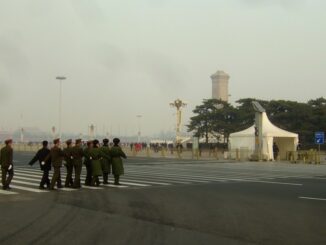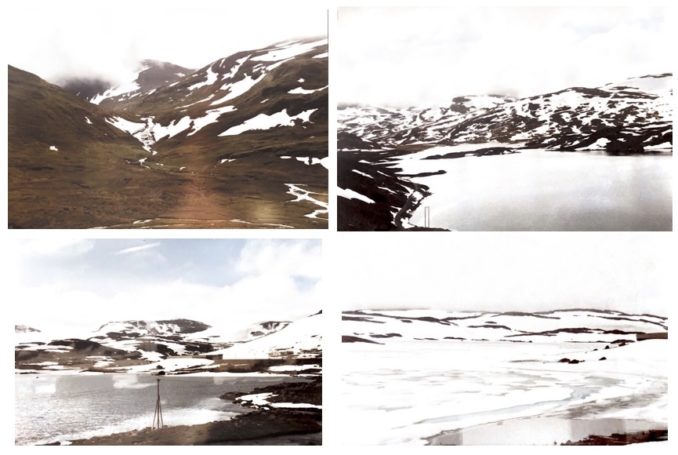
© Always Worth Saying 2025, Going Postal
Let’s cut to the quick and get down to brass tacks. Or rather cut to a railway line on the icy wastes of central Norway and investigate a strange trackside anomaly only visible to sharp-eyed Puffins while all others are distracted to the frozen lakes and glaciers on the Bergenbahnen line which runs for 308 miles between Bergen and Oslo (and climbs to an elevation of 4,000ft).
Without more delay, here’s our curiosity which I was reminded of via Google Maps while preparing a 1980s nostalgia Postcard of my own trip along the line. Pictured below, it looks like two-road rail access into a hillside. It sits at Haugasol, just after the summit of the line when travelling in the easterly direction. What might it be?

© Google Street View 2025, Google.com
As well as being famous for its glaciers icy plateaus, fjords and frozen lakes, Norway is also notable for bunkers and caves useful to the military. A founding member of NATO in 1949, Norway has always played a crucial role in the alliance’s strategic positioning in the Arctic and Northern Europe. Proximity to Russia includes a 120-mile-long border following the Pasvikelva and Jakobselva rivers in the far north.
Over the years, Norway hosted secret NATO bunkers and facilities designed for strategic military operations, including underground command centres and storage. These bunkers were key to ensuring rapid response capabilities in the event of a Cold War escalation. Today, Norway continues to maintain strong NATO ties in an evolving security landscape sharpened by recent events in Ukraine.
Declassified documents reveal that the Frigard cave system near Trondheim has been used for storage both in the past and present, with the largest facilities covering a floor area of 190,000 square feet — roughly double the size of a large out-of-town Asda. Even before the battle for Kiev, in 2021 Popular Mechanics magazine reported the U.S. Navy had moved a new 150-bed hospital to an underground cave system nearby,
‘The U.S. military, particularly the Navy and Marine Corps, have taken to Norway’s cave system as a secure means of storing and operating equipment The facilities are used not only to help defend Norway, but project power into the Arctic region. The solution: build caves into mountains.’
Norway had long built caves for its own forces, but in the 1980s began building caves to host U.S. Marine Corps units. During the Cold War, the Marines planned to send a Marine Amphibious Brigade to help defend the country. To speed deployment of the brigade during a crisis, all of the unit’s heavy equipment was stored in secure, climate-controlled caves.
This was known as the Marine Corps Prepositioning Program – Norway, with declassified documents showing the position of the facilities. But none of them are near the Haugastol halt shown above.
Located over 1,000 km north of Trondheim and 1,100 km north of Haugastol, Olavsvern is an underground submarine bunker near Tromsø. Situated inside the Arctic Circle and carved into a mountain, the facility features a kilometre-long tunnel leading to a base beneath 900 feet of solid rock. The interior spans 270,000 sq ft, with 140,000 sq ft dedicated to housing and 32,000 sq ft for a deep-water dock. Within one of the mountain halls, a dry dock for submarines is present, and the internal docks are said to be able to accommodate up to six submarines simultaneously.
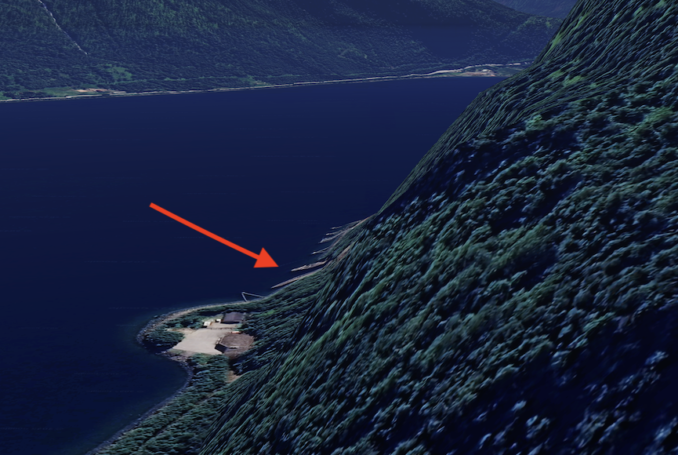
© Google Street View 2025, Google.com
Olavsvern also has barracks, hardened storage areas, and other maintenance facilities above and below the surface. Sold to the private sector at the end of the Cold War, the facility is now rented out to the military for exercises.
Located 140 km south of Tromsø, Narvik is accessible to travelling Puffins thanks to its port which handles iron ore transhipments from Swedish mines and can accommodate cruise liners. A railway line also runs 1,500 km from Stockholm along the Swedish side of the Baltic. The site of the famous Battle of Narvik in 1940, across the Ofotfjord from the town lies the Harstad-Narvik airfield at Evenes.
Located north of the Arctic Circle, Evenes Air Station is critical to the defence of Norway and NATO’s Northern Front. It is one of two Royal Norwegian Air Force bases hosting permanent F-35A stealth fighter units and it is also receiving the service’s fleet of P-8A maritime patrol aircraft.
In addition to its flying squadrons, Evenes is home to other important military units, including ones responsible for air defence (with NASAMS surface-to-air missiles), and elements of the Norwegian Cyber Defense Force and the Norwegian Armed Forces Logistics Organization. A civil as well as a military airport, Puffins arriving by air rather than ship or rail will pass a nondescript, unsign-posted side road on the way to Narvik.

© Google Street View 2025, Google.com
Satellite mapping reveals that the seemingly innocuous road leads to a facility which includes two roads (in the bottom right-hand corner) that disappear into the mountainside:

© Google Street View 2025, Google.com
But nowhere near, and looking nothing like, Haugasol. Might Haugasol be a civilian bunker? However, the Norwegian government’s Sentralanlegget (Central Facility) is in Hole, Buskerud County on the west side of the mountain Kongens utsikt.
While we’re on the subject, an honourable mention is obliged to the Svalbard seed bunker. The Svalbard Global Seed Vault on Spitsbergen Island in Norway’s Svalbard archipelago is a secure seed bank designed to preserve global plant diversity. Built into a mountainside, it stores seeds from around the world, providing a backup in case of natural or man-made disasters.
Opened in 2008, the facility is often referred to as the “Doomsday Vault.” It houses millions of seed samples, representing a crucial resource for future agricultural restoration. The remote location, permafrost, and advanced security ensure the seeds remain viable for centuries, safeguarding food security and biodiversity for future generations.
Although always pictured as if a doorway in a mountain in the middle of nowhere reached by trekking across virgin snow, in reality the store is accessible by road (with a sizeable car park) and is next to an airport, coal mine, the port of Longyearbyen and the Svalbard satellite station – a complex of over 100 communications domes. None of which explains – apart from the hint of deceit – the rails disappearing into a hillside at Haugasol.
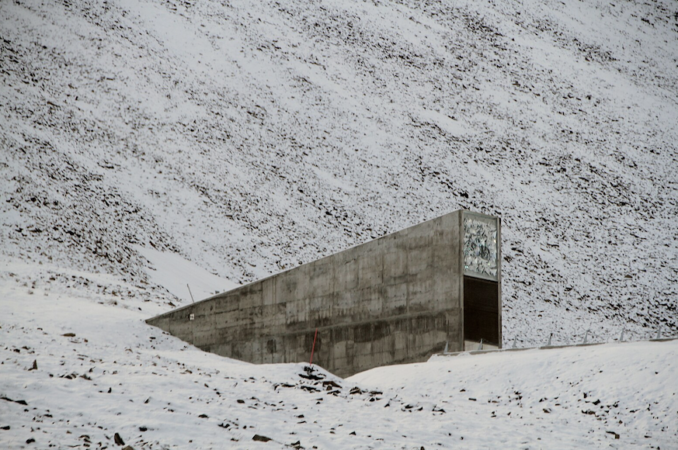
Misleading view of the Svalbard global seed vault,
Bjoertvedt – Licence CC BY-SA 3.0
At this point, Puffins owe a debt of gratitude to Mr. Enoch Djupdræt, a Norwegian photographer born in 1892. Trained as a naval officer, Enoch worked for the railway for 40 years and also ran a photographic studio at Nesttun in Bergen from 1932 until his death.
After his passing in 1962, his widow donated a portion of his negatives to the University of Bergen Library, where they are now housed in the Picture Collection. During a 1955 expedition, he photographed the railway, particularly around Haugasol. To help solve our railway mystery (our jernbanemysterium), we will say what we see!
In the image below we can see the station building which is little changed over seven decades later. In the background, at the bottom of the hills, various snow covers reveal the alignment of the railway. To the left, a the tunnel portal takes the line in the direction of the route’s summit at Finse. Clicking on the link will open the original picture and show greater detail.

View of Haugastøl in the 1950s,
Enoch Djupdræt – Licence CC BY-SA 3.0
In the foreground and to the right are barriers to stop snow drifting onto the line in winter. Halfway between them and the station platform is a turntable. Topped with solid wood to prevent it from filling with snow, this was required to turn the extra steam locomotives needed to double-head trains up the grade from Bergen or Oslo to the summit.
When steam engines were replaced by more powerful electric locomotives, the turntable was removed. The line was electrified in four stages, from Roa to Hønefoss on 1 February 1961, from Hønefoss to Ål on 1 December 1962, from Ål to Ustaoset on 15 December 1963 and finally from Ustaoset to Voss on 7 December 1964.
When Mr Djupdræt points his camera in the opposite direction we can see the hillside into which nowadays two rail lines disappear.
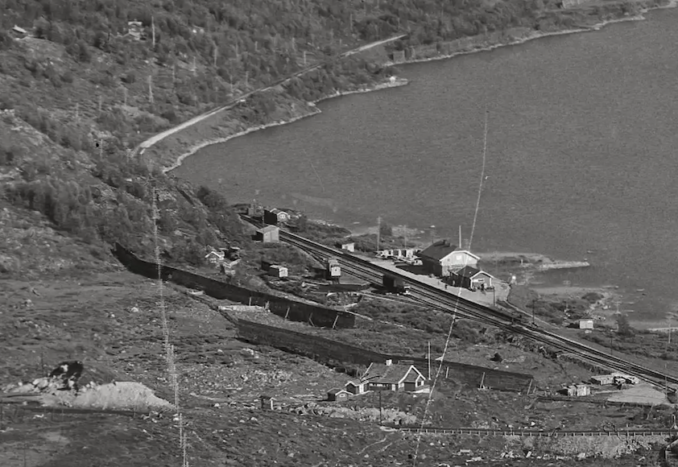
Bergensbanen; km 275; Haugastøl; 1955 ca.,
Enoch Djupdræt – With permission of University of Bergen Library
However, the hillside looks more recessed from the line then than it does now. Reference to the recent Street View photo, suggests two slab-sided concrete entrances built in front of the hillside with concrete added in the middle for disguise or for aesthetic reasons.
The wires and insulators entering the structure lead some to speculate it might be part of a hydroelectric scheme or the entrance to a facility that consumes a lot of power. In reality, the former is untrue, and the latter is the opposite of the truth.
The important clue lies in the electrification of the railway in 1964. For this bunker, as do other similar strictures scattered around remote Scandinavian railway lines, contains rail-based transformers used to convert the national supply into the current required for the electrified railway.
In Norway, nearly all railway substations use motor-generators which convert three-phase AC from the public grid into single-phase AC for the overhead lines. Most of these devices are mounted on railcars for quick replacement. Some substations are in blind-ending tunnels, with the one at Haugasol being a man-made bunker tunnel of slab-sided 1960s Brutalist concrete.
In England, such cabinets can be seen at the trackside next to a road or track for access. But in the far north, both the weather and difficulty of access means such equipment is better placed on a freight wagon in a rail-connected bunker. During maintenance, it can be towed away, with another being slotted beside in advance to ensure continuation of supply – hence the need for two roads.
Given that infrastructure can be sabotaged (the strategically important Bergensbanen was attacked by both Coastal Command and the Norwegian Resistance during the war) and that we are now facing difficult times, this is still likely to be somewhat of an official secret. If a curious normie demands to know, Puffins are advised to tap their noses and reply, ‘Can you keep the jernbanemysterium secret? So can I!’
© Always Worth Saying 2025



